It’s loud. Irreverent. Vibrant. Vivid. Uninhibitedly visceral. And it’s not afraid to look at many of the issues that are polarizing our society in the last couple of years – from gender identity to women’s agency, from fascination with social media to mob mentality, and how things might look like when being outraged over the most inconsequential things is taken to its logical extreme.
Continuing the ongoing series of interviews with creative artists working on various aspects of movie and TV productions, it is my pleasure to welcome Michael Grasley. In this interview he talks about this roots in the field of architecture, how art direction can make itself invisible to the audiences, choosing his projects, and his measure of success. Around these topics and more, Michael dives deep into his work on last year’s “Assassination Nation”.

Michael Grasley. Photography by Elissa Knight.
Kirill: Please tell us about yourself and the path that took you to where you are today.
Michael: I didn’t go to film school. My path was a more circuitous route. I was always interested in design and I was always really passionate about film. When I was a teenager, I would watch all the end credits and take note of the cinematographer or the costume designer. I was passionate about film in that way – understanding how the films related to each other, or the director’s previous projects.
I went to art school and studied industrial design and later ended up going to graduate school for architecture. The thing about architecture that I loved as a student was that you work in this studio environment with a dozen people and you work crazy hours and it’s super intense. The culture of that is actually great training for working in film. You get these projects that last for 3-4 weeks, and the focus is on communicating your ideas. You have visiting designers, architects and professors from other academic institutions coming to see the work. You present to them and they critique it.
Architecture school is notorious for being harsh in a way that is not personal. It takes away being overprotective of your ideas. If it’s a strong idea and if you communicate it properly, then you have success. And if it’s not that strong of an idea, and / or if you can’t communicate it, you fail.
After grad school I got involved with design work for theater projects where I was able to work closely with the actors during the rehearsal process. That was really an amazing experience. I was living up in Seattle at the time but I had friends who were working at Ridley Scott’s company, RSA, doing commercials for a couple of big directors. They basically talked me into coming to LA. The lure of those original paychecks and the free-lance lifestyle was pretty seductive compared with what I was doing at that time.
At first I worked on art crews doing mostly commercials and music videos, but I would also do mood books for directors to present to clients. Basically putting images together into some kind of meaningful narrative for a pitch.
At a certain point one of the designers I was working for said to me “There are so many of these little films happening, why don’t you just start designing movies if that’s what you want to do?”
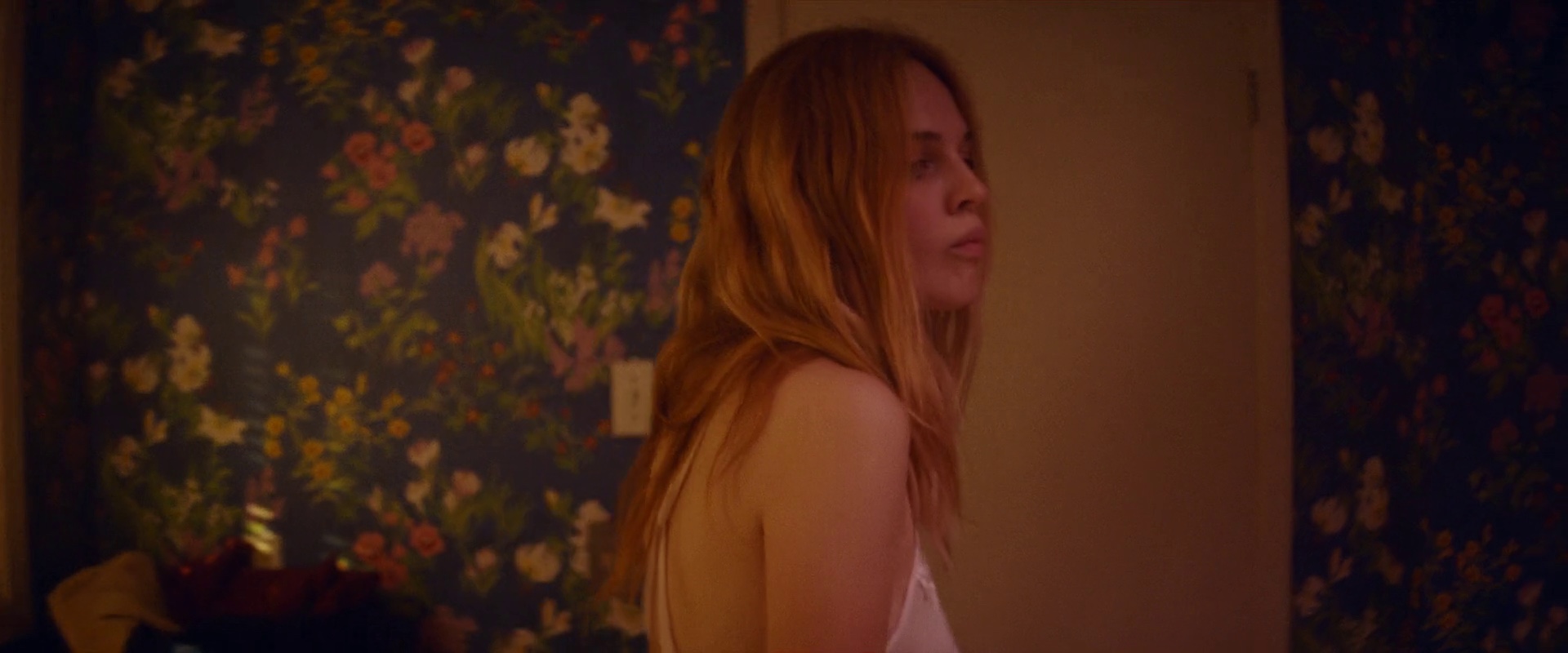
Kirill: Going back to your background in architecture, there you create something physical. You can get close to it, look at it from different angles, reach out your hand and touch it. How would you compare that with what you do for film or television, which might be more temporal or ephemeral?
Michael: That is true until the moment the film is released and then it lives forever. For good or for bad! I subscribe to the Roland Barthes theory that architecture and film are akin to one another. For instance, with a painting you might only glimpse at it and move on. Then compare that to cinema where you have to watch a film from beginning to end in order to understand the narrative. You might choose to walk out early, but you would also forfeit the experience. It is the same with a building. You step inside and in the logic of the architecture there is a narrative path. They both have a captive audience.
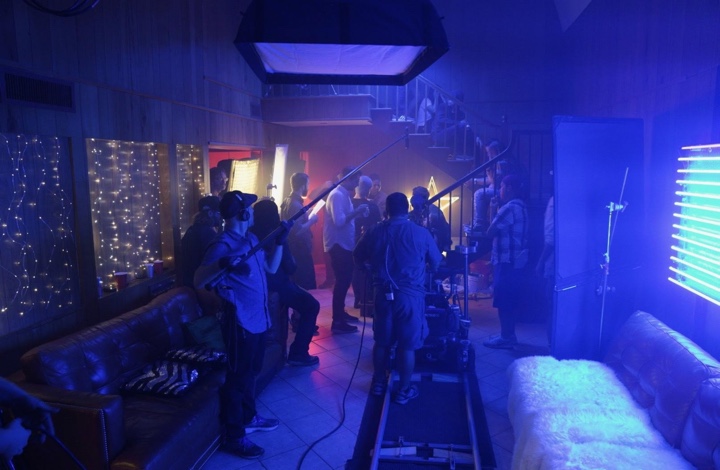
On the set of “Assassination Nation”. Photograph by Monica Lek. Courtesy Michael Grasley.
Continue reading »
Continuing the ongoing series of interviews with creative artists working on various aspects of movie and TV productions, it is my pleasure to welcome Ula Pontikos. In this interview she talks about the beginning of her career and technical changes in the last 15 years as the industry has shifted from film to digital, the various facets of cinematographer’s responsibilities on and off the set, and her approach to choosing the productions to work on. Around these topics and more, Ula dives deep into her work on the TV mini-series “The Game” and the recently released “Film Stars Don’t Die in Liverpool”.

Ula Pontikos on set. Photography by Stefan Lange.
Kirill: Please tell us about yourself and your path so far.
Ula: When I was studying at Ravensbourne College (I’m originally from Poland), I met Allan Fyfe who taught me basic knowledge of film cameras. Allan used to work for Arri Group and he took me under his wing. I bothered him with countless questions about cameras and lenses, but that did lead me to my first job as a trainee! I was really lucky in that role, as I worked for Chris Menges BSC, ASC on “Dirty Pretty Things”. Chris always made very detailed notes, and I was charged with taking continuity stills on his Polaroid camera and noting the contrast ratios.
From there, I assisted for another 6 years before I got accepted to the National Film and Television School. Coincidentally, my last job as an assistant was again with Chris.
The NFTS was such an inspiring place. Nic Powell was the head of the film school, and enthusiastically supported students with their personal project ideas. Mine was directing and filming a short documentary in Xinjiang, China. Equipped with a stripped down version of Aaton XTR (I took video assist off and had only one magazine) and 10 rolls of film, my boyfriend at the time and I filmed a documentary about the jade diggers of Yurunkash River. The story was really about trying to strike it rich, to get the big prize of one million yuan. They came each winter to dig the river bed, by themselves or as groups, but they all hoped to get lucky and win that lottery.
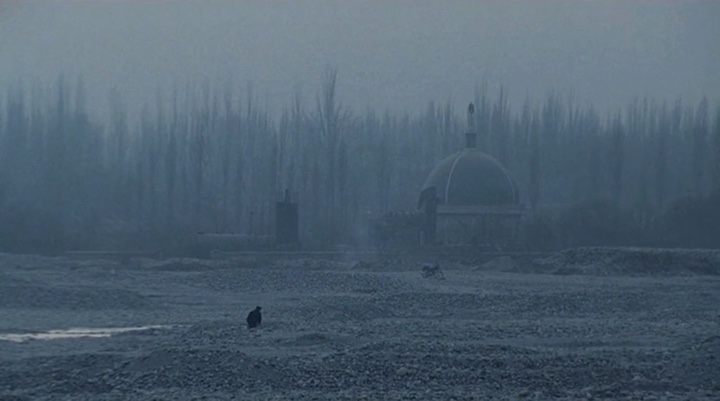
Cinematography of “China’s Wild West” by Ula Pontikos.
I felt very lucky when my documentary “China’s Wild West” premiered at Sundance in 2009, which was my dream festival.
Since graduating the NFTS, I’ve concentrated on narrative form. I had a number of jobs shooting shorts which led me to my first feature film “Weekend” with Andrew Haigh.
Kirill: Do you find yourself surprised when you join a new production and start working on it?
Ula: I feel I do my best work on projects that I feel passionate about. I love reading scripts that spark my imagination. I love feeling moved by the characters and the feeling of connecting with protagonists.
Every story is different. Every single project that I’ve done so far came with its own challenges. And every project has different technical aspects: from a handheld look to multiple cameras, to long takes, to back projections. I love the challenge and surprise of each new job.
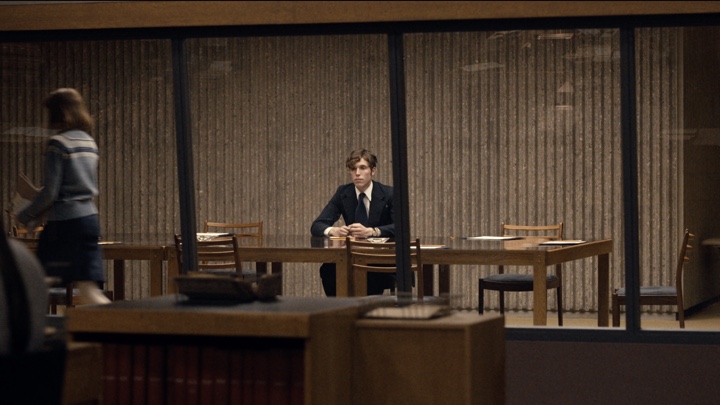
Cinematography of “The Game” by Ula Pontikos.
Continue reading »
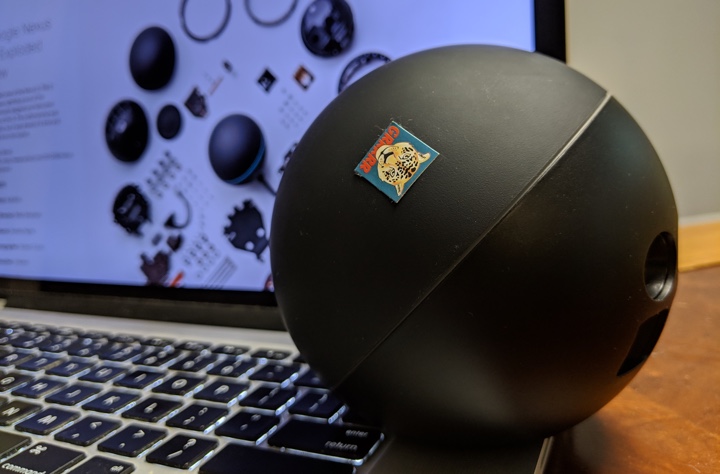
This happened during the testing phase of the short-lived Nexus Q (back around early 2012 probably). I placed the unit in my home office and connected it to a pair of speakers. As Q was controlled via Galaxy Nexus, I put it on the bottom shelf of my printer stand. What was the bug you ask? Every time I started printing a page, a few seconds later Q’s volume went to the max.
As some of you may remember, the top dome of Q controls the volume. The printer stand I bought wasn’t overly sturdy and would wobble a bit when the printer was printing. The wobble wasn’t enough to cause dome rotation (you can see the sticker I put on Q to look at the rotation), but just enough to have one of the shakes spike something inside Q to turn the volume all the way up. Most of the shakes looked to be blocked by some kind of a stabilization mechanism around, but that occasional shake had just the right combination of amplitude and frequency to get through.
I don’t think that anything happened with that bug report, although a few people had a good laugh or two joking about minor California earthquakes jolting all Q’s to max volume. Not that that ever happened as the device was discontinued shortly after it was announced.
Continuing the ongoing series of interviews on fantasy user interfaces, it’s my honor to welcome Stylow. In this interview he talks about breaking into the world of screen graphics, the ever-raising bar in the field, finding inspiration and pushing forward. In between and around, Stylow dives deeper into his work on the screens of “Ghost in the Shell” and “Ready Player One”.
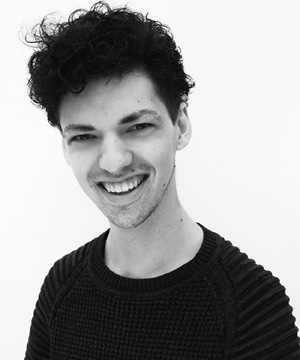 Kirill: Please tell us about yourself and the path that took you to where you are today.
Kirill: Please tell us about yourself and the path that took you to where you are today.
Stylow: I’ve always been creatively active without me realizing it. My parents were always involved in the creative industry; my mom is a singer and my dad is a dancer, stepdad an actor, so I was always surrounded by creative individuals.
As I kid I was always active. I remember I spent a lot of time playing with Kapla blocks, making all these weird structures. I had books of them which were basically tutorials for kids on how to make certain structures. I also went to a Steiner school where they focus on the children and bringing the best out of them through arts. You are exploring creativity through painting, sculpting etc at very early age even in classes like math or biology.
Much later on I was really excited by the VFX industry when I saw “The Matrix”. I was blown away. It was insane, and I was just trying to understand how they’ve done it. I was around 15 when I started looking at behind-the-scenes of how you make movies and how you do certain VFX. I then discovered Photoshop, and I initially thought it was a program to edit cars with.
I was playing with Photoshop, and that later led me to making VFX in AfterEffects. For quite a long time I was stuck in this world of 2D, I always admired 3D work because the possibilities are endless. I didn’t do 3D, so I was trying to fake it in AfterEffects by using 2.5D effects.
After a while I told my step-dad that I will spend a full year doing dailies around the age of 23. It’s quite famous nowadays on Instagram, you see it everywhere. He liked that decision, because he saw that I wanted to push myself. I was never spending any time with 3D, so to actually learn it I would have to dive deep into that world. When he heard that, he said that if I miss a day, he would shave my hair [laughs]. I agreed, and that was our little contract. That got me going for 365 days and I learned so much by just sitting down everyday and learning from tutorials. Anything I saw and didn’t know how to do it, I would google it and try to mimic it.
That is how I got into the industry. It was through posting that work every day on social media. I got in contact with studios, and eventually worked with Territory where I’ve done most of my UI work.
Kirill: Do you think that you are a part of a newer generation that was not exposed as much to the more physical side of design? Would you say that the digital side of it has been the dominating force on your path so far?
Stylow: Technology is advancing so fast that these days you can do very cool things with very cool software. I remember back when I was trying box modeling. I started with Maya and then went to Cinema4D, and it was difficult. I think that technology definitely helps making it quicker for, let’s say, the younger generation out there.
And it’s good to know how difficult it was as well going into that space. You should know some of the basics, how it was before, so that you can adapt to that new space which is 3D. It’s like sculpting with actual clay can be transferred these days to sculpting in software, or lighting an object for photography vs CGI as well. I still try to think how would you light this if it was an actual physical thing. So knowing the real thing will help for sure.
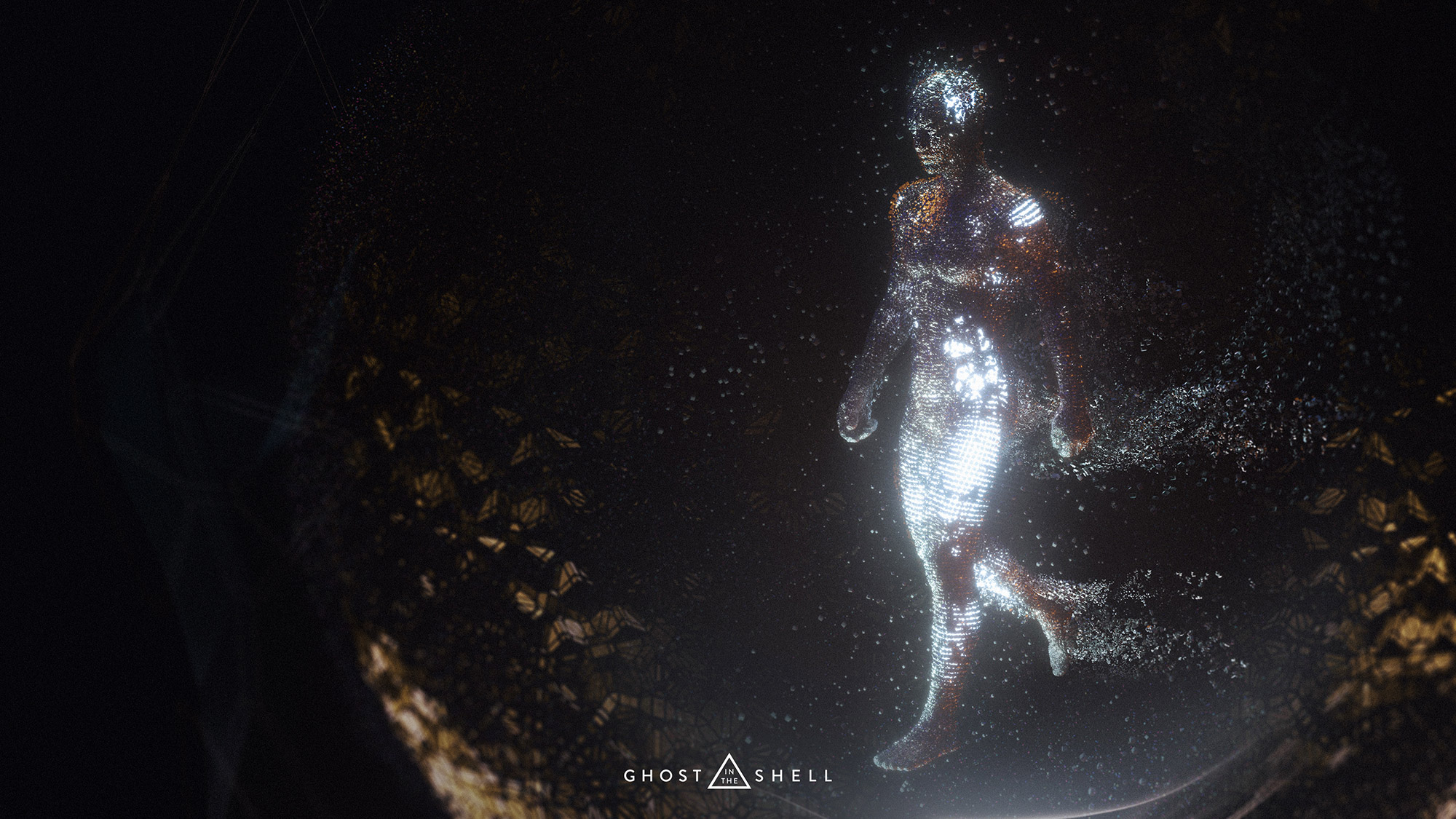
Concept art for “Ghost in the Shell“, courtesy of Stylow.
Kirill: One thing that people always mention in these interviews is that render times stay roughly the same no matter how much the underlying technology progresses. The hardware is getting faster and the software is getting more sophisticated, but the level of demands from clients and productions keeps on rising as well.
Stylow: It’s the natural evolution of almost anything, really. When something is quick and easy to do, I guess you don’t feel fulfilled in some ways. I start feeling that I haven’t pushed it far enough. I was working with a 7-GPU system, and some renders in OctaneRender were so quick that it feels like you have to add more and go another level deeper or at least it gives you the possibility to now do more thanks to technology moving forward so fast. You’ll definitely always push that bar.
I think it will never stop, but the teams might become smaller because of that. There are amazing artists out there these days. Somebody talented can make a full CGI short by themselves, and nobody would take you serious if you said that just 20 years ago [laughs].
Kirill: I remember when I was in college in mid ’90s, and the high end graphical SGI stations cost over $150K each, not even adjusted for inflation. Probably today it’s much more affordable to get into the field, where you can get a decent desktop machine for so much cheaper.
Stylow: We were talking about pushing the bar. So yes, it is easier to step into it because the tools are way cheaper, but the bar is so much higher now. It’s almost scary to start in that aspect. You have all these amazing artists out there, and it’s daunting to look at it when you’re just starting out. The bar keeps on going higher and higher because in some aspects of that the tools are cheap.
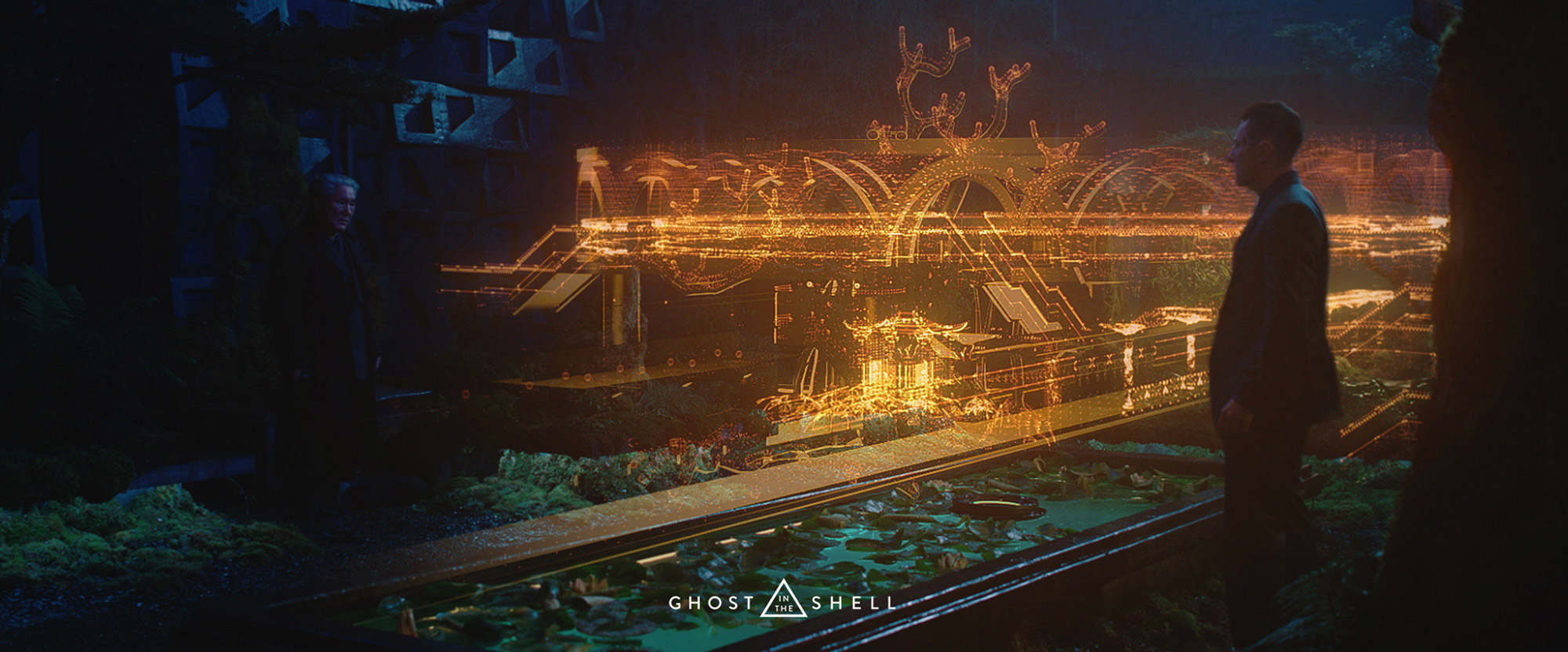
Concept art for “Ghost in the Shell“, courtesy of Stylow.
Continue reading »
![]()
![]()
![]()